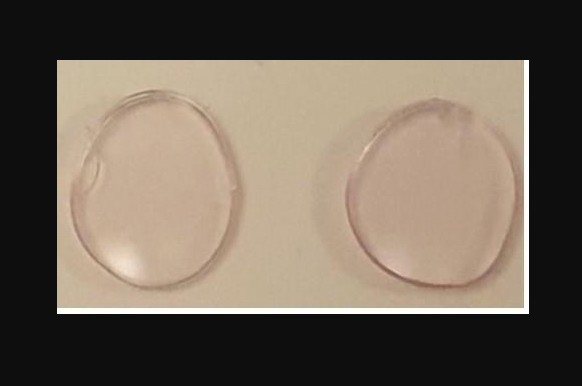While there already are glasses that help compensate for red-green color blindness, the lenses often can’t be shaped to users’ prescriptions. That’s why scientists are now developing a new type of corrective contact lens – and it was inspired by old gold-containing glass.
First of all, color blindness-correcting contact lenses do also already exist.
Like the glasses, they have a red tint that filters out certain wavelengths of light, causing the colors red and green to stand out more. As a result, red-green color blind users are better able to differentiate between the two. Unfortunately, though, tests have shown that the red dye used in some of these lenses gradually leaches out into the eye, potentially causing health problems.
Led by Ahmed Salih and Haider Butt, researchers from the United Arab Emirates’ Khalifa University instead created prototype contact lenses by suspending biocompatible light-scattering gold nanoparticles within a hydrogel polymer. The scientists took their inspiration from “cranberry glass,” a centuries-old material that likewise uses gold particles to produce a red tint.

Adapted from ACS Nano 2021, DOI: 10.1021/acsnano.0c09657
It was found that the lenses worked best when 40-nanometer-wide particles were used, as these resisted clumping plus they didn’t filter out more wavelengths of light than was necessary – in fact, they were more selective in their light filtration than two commercially available brands of corrective glasses.
Importantly though, the light that they did filter out was in the 520 to 580 nanometer range, which is where the colors red and green overlap. This means that in practise, they should help users to better perceive red and green as two separate colors. Clinical trials are now being planned to see if this is indeed the case, and to assess the comfort of the lenses.
The research is described in a paper that was recently published in the journal ACS Nano.
Source: American Chemical Society
Source of Article